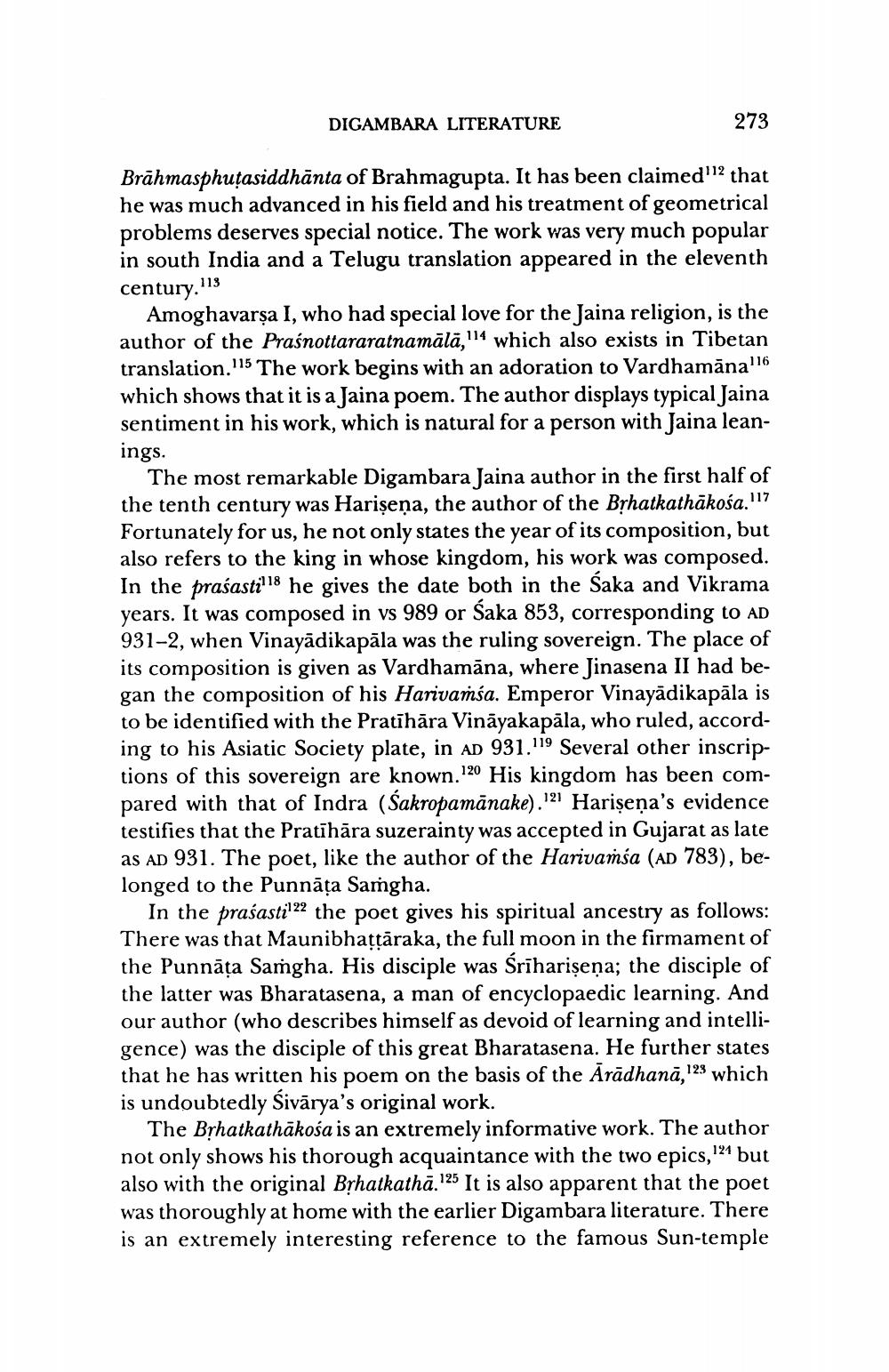________________
DIGAMBARA LITERATURE
273
Brāhmasphutasiddhānta of Brahmagupta. It has been claimed that he was much advanced in his field and his treatment of geometrical problems deserves special notice. The work was very much popular in south India and a Telugu translation appeared in the eleventh century.'18
Amoghavarşa I, who had special love for the Jaina religion, is the author of the Praśnottararatnamālā,"14 which also exists in Tibetan translation.115 The work begins with an adoration to Vardhamanal16 which shows that it is a Jaina poem. The author displays typical Jaina sentiment in his work, which is natural for a person with Jaina leanings.
The most remarkable Digambara Jaina author in the first half of the tenth century was Harișena, the author of the Brhatkathākośa.'17 Fortunately for us, he not only states the year of its composition, but also refers to the king in whose kingdom, his work was composed. In the praśastil18 he gives the date both in the Saka and Vikrama years. It was composed in vs 989 or Śaka 853, corresponding to AD 931-2, when Vinayādikapāla was the ruling sovereign. The place of its composition is given as Vardhamāna, where Jinasena II had began the composition of his Harivamsa. Emperor Vinayādikapāla is to be identified with the Pratīhāra Vinayakapāla, who ruled, according to his Asiatic Society plate, in AD 931.119 Several other inscriptions of this sovereign are known.120 His kingdom has been compared with that of Indra (Sakropamānake).121 Harisena's evidence testifies that the Pratīhāra suzerainty was accepted in Gujarat as late as AD 931. The poet, like the author of the Harivamsa (AD 783), belonged to the Punnāta Samgha.
In the praśastil22 the poet gives his spiritual ancestry as follows: There was that Maunibhattāraka, the full moon in the firmament of the Punnāta Samgha. His disciple was Śrīharișeņa; the disciple of the latter was Bharatasena, a man of encyclopaedic learning. And our author (who describes himself as devoid of learning and intelligence) was the disciple of this great Bharatasena. He further states that he has written his poem on the basis of the Arādhanā, 123 which is undoubtedly Sivārya's original work.
The Byhatkathākośa is an extremely informative work. The author not only shows his thorough acquaintance with the two epics, 124 but also with the original Brhatkathā.125 It is also apparent that the poet was thoroughly at home with the earlier Digambara literature. There is an extremely interesting reference to the famous Sun-temple




